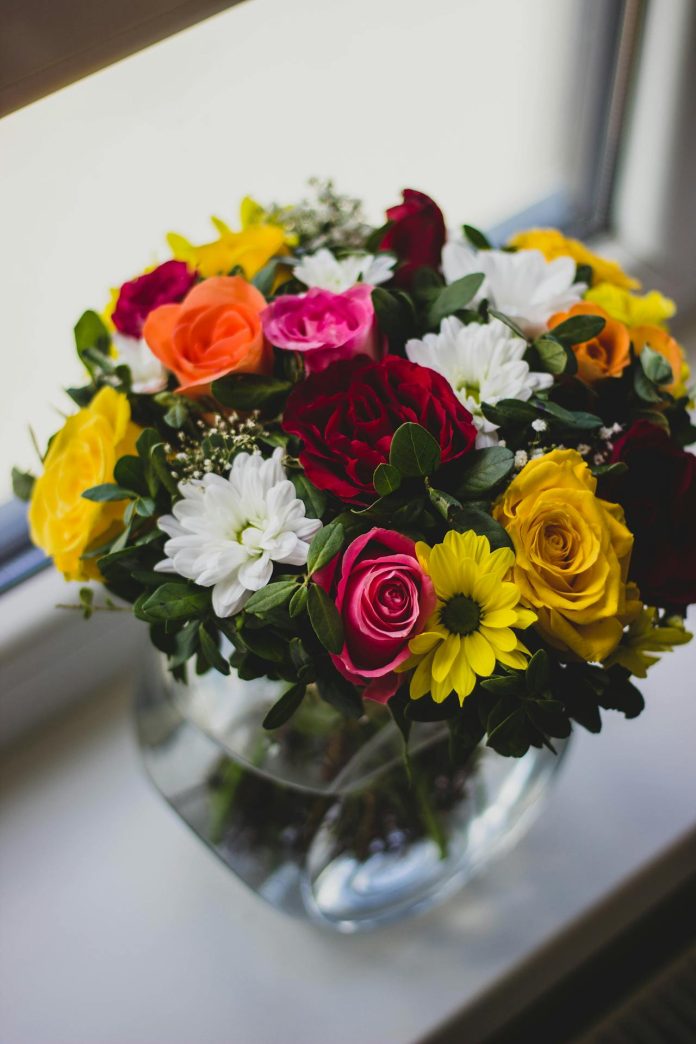There is something quietly powerful about buying yourself flowers, not as a performance, not as a placeholder until someone else does it, but as a small declaration that beauty is not something you must be given, but something you’re allowed to choose for yourself. A bouquet on your kitchen table, your desk, or your bedside, softens the room and softens you. It signals that the everyday deserves tenderness.
Anyone who has ever brought home roses or lilies knows the disappointment of watching them droop too soon. Flowers can be fragile companions, but with a bit of care, they can last much longer than we think.
The first step happens before you even leave the florist: look at the stems. Healthy flowers have firm stems, bright leaves, and petals that haven’t yet opened all the way. If the petals are already falling away or the stems feel slimy or weak, the flowers are already nearing their end. Part of taking care of your flowers is choosing ones that still have life in them.
When you get home, always cut the stems. A fresh diagonal cut creates a wider surface area for water to travel through the stem. Flowers drink through their stems the way we drink through a straw. If the bottom is blocked, they can’t take in water, and they wilt. A sharp knife or good scissors is fine, just avoid crushing the stem.
Place them in a clean vase. Bacteria is what kills flowers fastest, not time. A dirty vase and old water shorten their life significantly. Fill the vase with cool water, not hot, and change it every two days. Every time you change the water, trim the stems again, just a little. Remove any leaves that sit below the waterline. Leaves in water rot quickly and introduce bacteria, which shortens the life of the entire bouquet. Strip them off and keep the water clear.
If your bouquet came with that tiny packet of flower food, use it. If not, a simple homemade version works: a teaspoon of sugar (for nourishment), a splash of white vinegar or lemon juice (to prevent bacteria), and a small pinch of salt. You don’t need much, just enough to maintain freshness.
Keep your flowers away from direct sunlight, heat, and ripening fruit. Bananas, apples, and other ripe fruit release ethylene gas that makes flowers age faster. A bouquet next to a fruit bowl is beautiful, but short-lived.
Also, some flowers simply last longer than others. Chrysanthemums, carnations, lilies, alstroemeria, and sunflowers tend to stay fresh for days, sometimes weeks, if well cared for. Roses require more attention, like being recut frequently and kept cool. Hydrangeas need their petals misted. Tulips will keep growing even after they’re in the vase, leaning toward light, reshaping the bouquet as they go. Flowers have personalities that you can learn over time.
Caring for flowers is not a frivolous habit. It’s a daily act of presence. It teaches you to notice — water levels, softness of petals, early signs of fading. It teaches you that beauty doesn’t just come into a room, it must be tended to and maintained.
And yes, buy yourself flowers. Do it on an ordinary day. On a Tuesday when you’re tired. On a Sunday morning after cleaning your space. On a day where nothing dramatic happened and everything feels a little flat. Flowers aren’t about celebration. They’re about reminding yourself that you are allowed softness. That your home deserves beauty and that joy can be small and still matter, and that you can give it to yourself.







